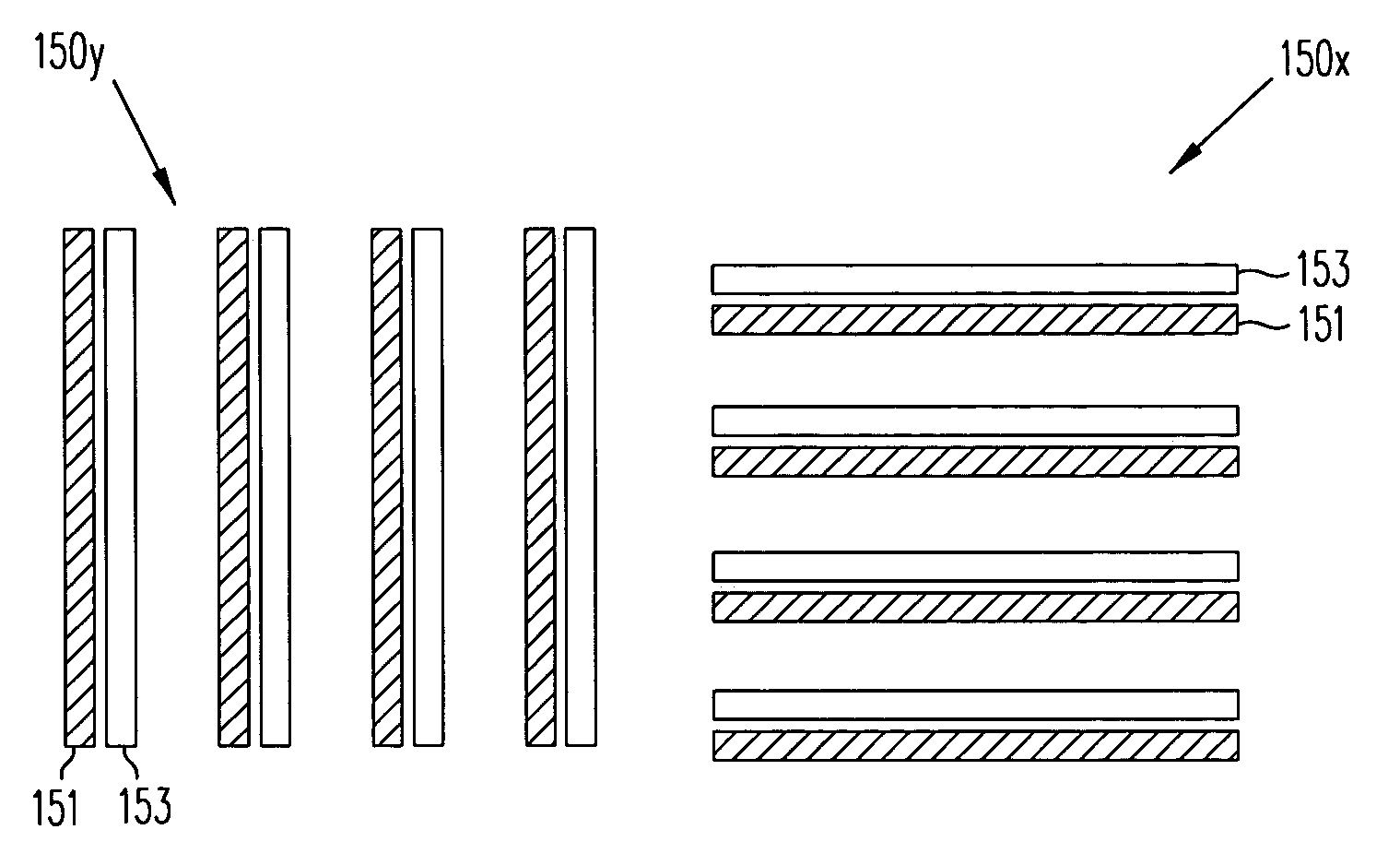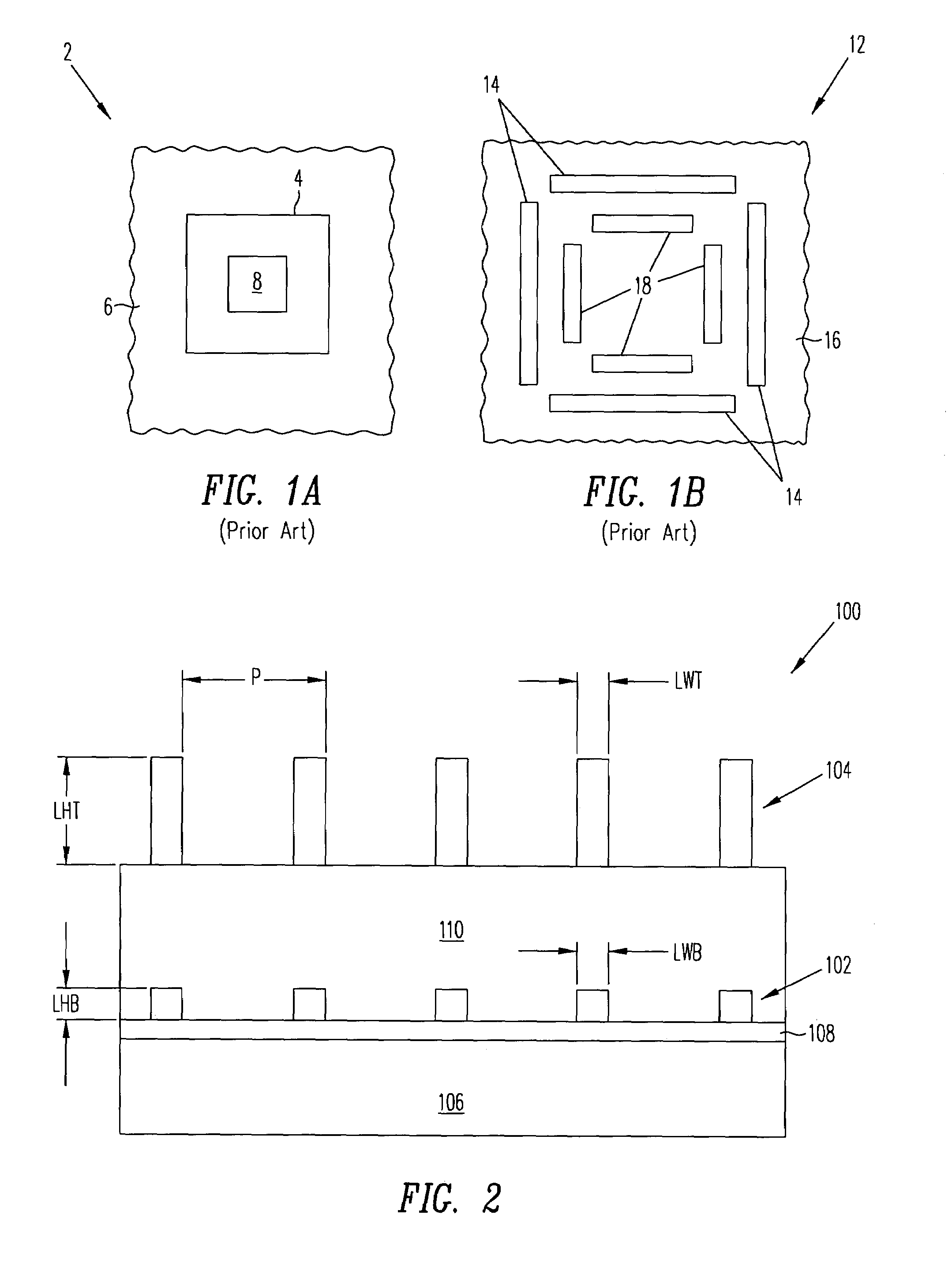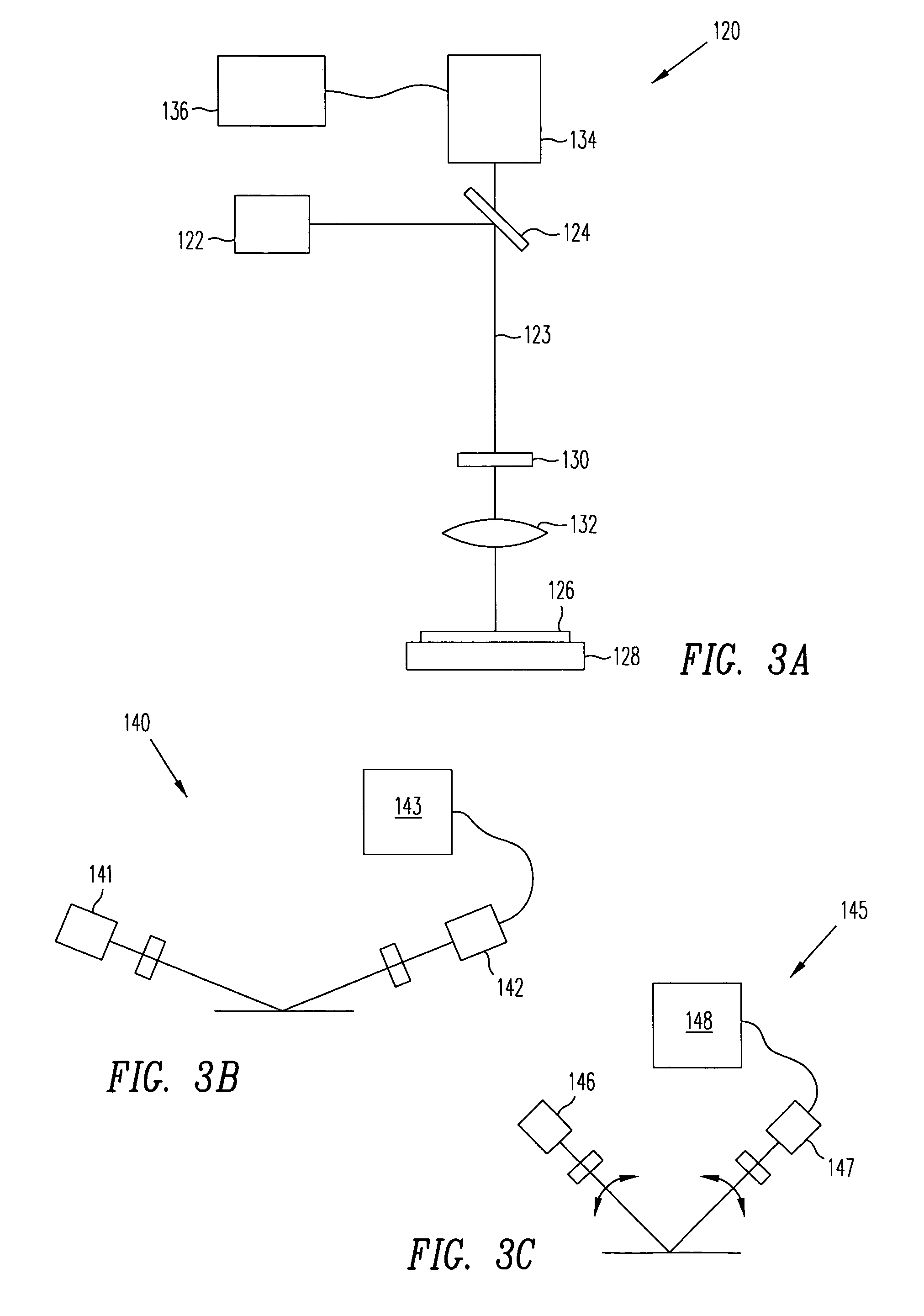Spectroscopically measured overlay target
a target and spectroscopic technology, applied in the field of overlay target, can solve the problems of reducing overlay alignment tolerances, difficult to measure the alignment accuracy of one masking level to the previous level, and increasing the difficulty of one masking level to measure the alignment accuracy to the previous level
- Summary
- Abstract
- Description
- Claims
- Application Information
AI Technical Summary
Benefits of technology
Problems solved by technology
Method used
Image
Examples
Embodiment Construction
[0031]In accordance with an embodiment of the present invention, an overlay target is spectroscopically measured, which advantageously avoids problems associated with high magnification. In one embodiment, the overlay target is asymmetrical, which advantageously increases sensitivity in the spectroscopic measurement. Additionally, the overlay target can be optimized for sensitivity.
[0032]FIG. 2 shows a cross sectional view of an overlay target 100 in accordance with an embodiment of the present invention. Overlay target 100 includes two sets of diffraction grating structures; a bottom diffraction grating 102 and a top diffraction grating 104. Overlay target 100 is produced on a substrate 106, which is e.g., a silicon substrate, and any overlying layers, shown as layer 108, which may be a gate oxide layer, which is e.g., 3.5 nm thick. The bottom diffraction grating 102 is produced, for example, by producing a layer of appropriate material, such as a 200 nm layer of polysilicon, follo...
PUM
 Login to View More
Login to View More Abstract
Description
Claims
Application Information
 Login to View More
Login to View More - R&D
- Intellectual Property
- Life Sciences
- Materials
- Tech Scout
- Unparalleled Data Quality
- Higher Quality Content
- 60% Fewer Hallucinations
Browse by: Latest US Patents, China's latest patents, Technical Efficacy Thesaurus, Application Domain, Technology Topic, Popular Technical Reports.
© 2025 PatSnap. All rights reserved.Legal|Privacy policy|Modern Slavery Act Transparency Statement|Sitemap|About US| Contact US: help@patsnap.com



